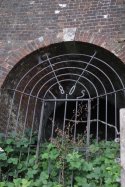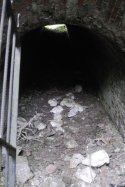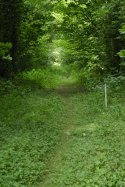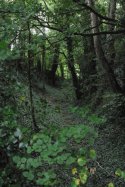Offham and Mount Caburn Chalk Pits
Offham
NGR TQ 397113During the 1809 the owner of the chalk pit decided to build a tramway to transport the lime and chalk from the quarry down to the barges on the river Ouse, as the steep slope was dangerous and costly in both horse and carts and men. In 1809 William Jessop opened the tramway which had a large wheel at the top with a brake, the weight of full trucks of lime and chalk travelling down pulled the empty ones back up the 60% sloped track. This method of transport was used until 1870 when the pit was closed."
Mount Caburn
On 17th October 1885 a Telpher line or aerial railway was opened from transfer sidings in Glynde goods yard to a clay pit, believed to be Caburn Pit, about a mile away. The clay was to be used in the cement making process at the newly established Sussex Portland Cement Company works at South Heighton near Newhaven. Telpherage differed from aerial ropeways in that instead of hauling the suspended wagons by a continuous moving cable the wagons themselves were powered by electric motors, taking their current from the aerial lines. It was the invention of Professor H.C. Fleming-Jenkin who patented the system in 1882 and so dates from the earliest days of the commercial exploitation of electric power. The system at Glynde was the first electrically powered aerial railway in the world. The line used steel rods as running rails supported about 18 ft above the ground by wooden frames about 66 ft apart. How successful the system was is unknown but the 1899 Ordnance Survey shows it replaced by a tramway crossing Glynde Reach by a bridge. The clay pit and tramway ceased to be used about 1915. If one walks a quarter mile west from Glynde Bridge a small embankment can be found either side of the long vanished crossing at TQ453086. A bridge can also be found under Ranscombe Lane at TQ452087
Many Thanks to David Rix and Richard Blagrove for their information on these inclines






